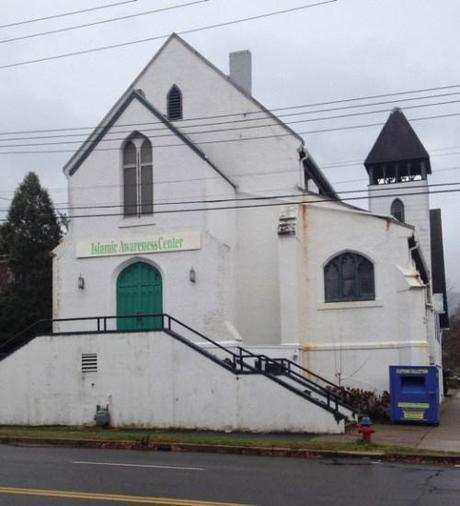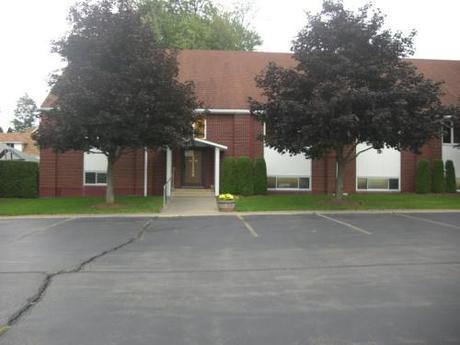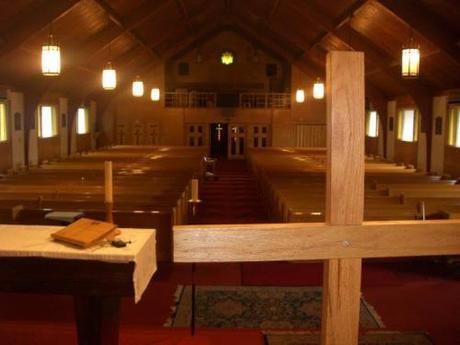The leftwing media have made “orthodox” a dirty word.
But the word “orthodox” simply means “correct teaching.” In other words, “orthodox” Christians are those who are faithful to the “correct teaching” instead of the Left’s warped version.
Orthodox Episcopalians, like other orthodox Christians, are those who are faithful to the “correct teaching” of the Bible. But the Episcopalian Church in the United States, like its counterpart the Anglican Church in the UK, has gone full-tilt Left with homosexual clergy and approval of homosexual marriage. As a consequence, more and more orthodox Episcopalians are breaking away from their diocese.
The response from the Episcopal Church leaders is to punish them by evicting the orthodox from church buildings, to which the congregants’ parents and grandparents had paid, and by refusing to sell the building to its congregants. In Binghamton, NY, the Episcopal Church actually sold the church building at a lower price to a Muslim group, just to spite the orthodox.
By their fruits, you will know them.

Jamie Dean reports for World, Dec. 13, 2013:
A scorched earth policy. That’s how Anglicans who have left The Episcopal Church (TEC) and its endorsement of unbiblical beliefs and actions often describe TEC’s response. From depressed Binghamton, N.Y., to affluent Newport Beach, Calif., TEC leaders have fought dozens of court battles to force congregations leaving the denomination to forfeit the buildings they, their parents, and their grandparents paid for.
Here’s one example: Church of the Good Shepherd stood for nearly 130 years on a main road through Binghamton, a former manufacturing hub that now has a high unemployment rate. Members were long concerned about theological drift, and the consecration of a homosexual bishop in 2003 by TEC’s General Convention was the last straw.
Binghamton rector Matt Kennedy began a conversation with the bishop of central New York, telling him the church would likely leave TEC to seek oversight of an Anglican bishop in another province. Kennedy says the initial meetings were productive, and the congregation offered to buy its building from the diocese for $150,000—but TEC hierarchs rejected the offer. After the congregation disaffiliated from TEC in 2007, the diocese filed suit for the building.
Kennedy says the congregation considered walking away, but would have had no resources to continue. Plus, the rector said: “We thought it would be good for outsiders to see that those who claim to be about tolerance and inclusivity really aren’t about those things. It’s really more a kind of tyranny.” In 2009, though, a judge ruled against the congregation, which had to leave immediately.
Kennedy remembers “one of our more stoic men standing in front of a plaque bearing his father’s name, tracing the inscription with his finger.” The plaque would have to stay. In 2010 the diocese sold the church to local Muslims for $50,000, according to Virtue Online, three times less than what the departing Christians had offered. The Muslims used a crane to remove the cross. A sign on the building now reads, “Islamic Awareness Center.”
Anglicans mourned the loss, but Roman Catholics offered them an abandoned church building at a reduced price the Anglicans could afford. Anglican Church of the Good Shepherd now meets on a property that includes a sanctuary four times larger than the old one, with 10 times the parking capacity. The rectory for Kennedy’s family (now with six children) is larger than the one he had to give up. A local day school rents a school building on the property that covers the church’s mortgage.


On a recent Thursday evening, local community members sat around long tables in the fellowship hall for a weekly soup kitchen. The extra space has allowed the church to accommodate more people. Some visitors to the soup kitchen have become members of the church. And the larger campus has allowed the church to expand outreach to a nearby low-income neighborhood.
But despite the church’s material blessings, Kennedy says the primary lesson has been about letting go: “The experience of standing firm for the gospel and suffering loss has taught us that Christianity is not about Jesus giving you a new car and a better job. … It’s about giving everything for Jesus.”
THE SCORCHED EARTH POLICY is also evident 3,000 miles away at St. James Anglican Church, which for more than half a century owned property in Newport Beach: The 300-member congregation now meets in a fluorescent-lit room with exposed pipes and concrete walls. It’s a humble setting for an affluent congregation accustomed to soft lighting and stained glass, but a fitting one this month for celebrating the birth of a Savior in a barnyard stable—and that’s one of the providential results of the scorched earth policy.
St. James lost its building even though the church had a written agreement with its diocese that seemed to ensure the congregation’s ownership of the building—but when it was time to part, the diocese and TEC sued the congregation, and a judge cited an Episcopal Church canon declaring that all church property belongs to the diocese and the denomination.
Judges across the country have used the same rationale to expel dozens of congregations from their buildings over the last decade, as TEC and local dioceses wage a relentless campaign against departing churches. But many Anglicans, while suffering significant material loss, are finding substantial spiritual gain. Caroline Crocker, the wife of St. James’ rector, compares the dynamic to the account of Joseph in the Old Testament: “What one meant for evil, God meant for good.”
Other churches around the country share similar stories. Some don’t get other buildings. Some don’t even survive. Yet, many Anglicans say they’ve learned more about humility and ministry by losing material possessions. Many say they’ve also learned about unity in the broader church, with other local congregations offering help. Meanwhile, TEC membership continues to fall. At 1.9 million in 2010, it’s about half of what it was in 1960, and 16 percent lower than in 2002.
Read the rest of the article HERE.
H/t California Catholic Daily
~Eowyn

